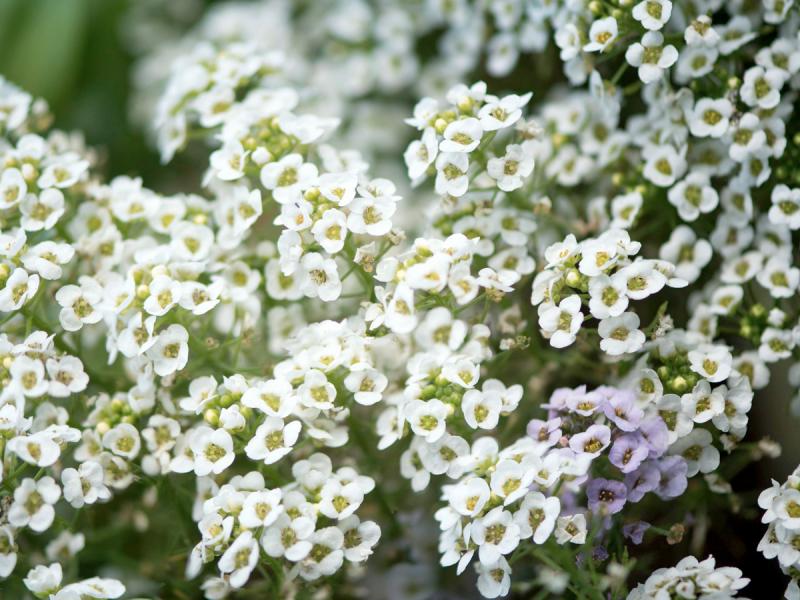To differentiate it from rugby football, the Football Association drew up rules for the game of Associated Football, and soon enough Association Football got the shortened university slang (along with the jocular addition of “-er”) from the abbreviation of association (Assoc) and became Soccer. Apparently the soccer players shied away from using the first three letters of association.
In the garden, thanks to a study by horticulturist Eric Brennan at the Agricultural Research Service, organic lettuce growers are now using association planting, also known as companion planting, to protect their crops without pesticides.
Plant Alyssum (Lobularia maritime) randomly among your lettuce plants (Lactuca sativa), and this association crop helps naturally protect the lettuce from leaf-eating aphids. Aphids are especially hard to control when they attack lettuce because the insects tend to live hidden in the inner leaves of the plants.
Alyssum is an easy-to-grow annual, blooming with waves of tiny flowers that attract hoverflies. The hoverflies drink the nectar from the Alyssum’s flowers and stay on to lay eggs. After the eggs hatch, the hoverfly larvae feed on aphids that often attack lettuce.
It is most effective to randomly intersperse Alyssum flowers right in the rows of lettuce. This encourages hoverflies to feed and then lay eggs evenly throughout your lettuce patch.
And with a little planning you can keep lettuce producing all summer. To start, choose leaf lettuce or loose head lettuce such as Bibb lettuce for your summer crops. Try leafy lettuces such as Amish Deer Tongue, whose dark-green, pointed leaves are soft with a crisp, sharp flavor. Amish Deer Tongue is rugged and produces well.
Black Seeded Simpson lettuce has been grown for over 150 years, and is a reliable, tender and delicious leafy green lettuce that grows well almost everywhere. Lolla Rossa lettuce has frilly, striking red leaves that are ideal for a summer-long harvest.
Avoid head lettuce such as iceberg, because head lettuces take so long to mature they often go to seed even before they form true, firm heads.
Because lettuce grows best in cooler temperatures, under 75 degrees F, we tend to give up on it during the hot summer, and replace lettuce with heat-loving plants such as tomatoes. Many gardeners will pull up spring-planted lettuce by midsummer and replant for a fall crop.
Instead, you can double crop and use the space between tomato plants by sowing leaf lettuce among them. The tomato plants will help shade the lettuce from the hot sun. You can plant lettuce among flowerbeds or even as an edging plant along paths.
Plant lettuce one-quarter inch deep in rich soil with a pH of 6.2-6.8. Lettuce grows quickly, so it needs lots of nutrients, and is known as a “heavy feeder.” Add lots of organic material to your soil, such as compost or well-rotted manure.
Begin harvesting leaf lettuces even while very young, though for maximum harvest let the leaves grow to about four to six inches high. By cutting just the outer leaves, you let the remaining center leaves continue growing. This cut-and-come-again harvesting is quite popular for home gardeners, and cutting back lettuce shocks the lettuce plant to keep growing and not go to seed.
To encourage your lettuce to continue growing new, tender leaves, keep the leaves cropped short. If you let leaves grow large and mature, it signals the plant to go to seed or bolt. Once lettuce has bolted, the leaves become bitter and inedible.
So plant Alyssum with your leaf lettuce and you will have crisp salads to eat while watching Association Football, because bitter lettuce makes for bitter people, and perhaps that would be guilt by association.


















































